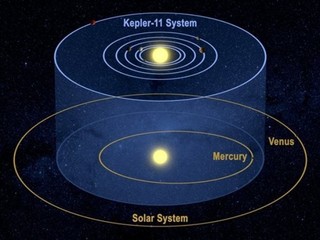In early February, NASA announced new results suggesting that a sizable number of planets are orbiting other stars in our Milky Way galaxy. Scientists are using the Kepler Space Telescope to measure tiny variations in the light of distant stars, which could represent planets passing between a star and the telescope. Observers identified 1235 “planet candidates” within Kepler’s field of view. Like someone looking through a soda straw, Kepler stares at 1/400th of the total galaxy, which gives it a view of some 156,000 stars. Extrapolating from this 1/400th to the whole galaxy, the number of potential “planet candidates” becomes large, compared to previously available data. Around fifty-four of those candidates seen so far in Kepler’s sliver of the sky are thought to be in the habitable zone between too cold for life, and too hot. While the number of galaxies in the universe is not known with precision, the current estimates range from 100 billion to over 200 billion. So, the number of habitable planets in the universe could be vast.
Be Not Afraid -- of Aliens!

Read Full Article »
Comment



